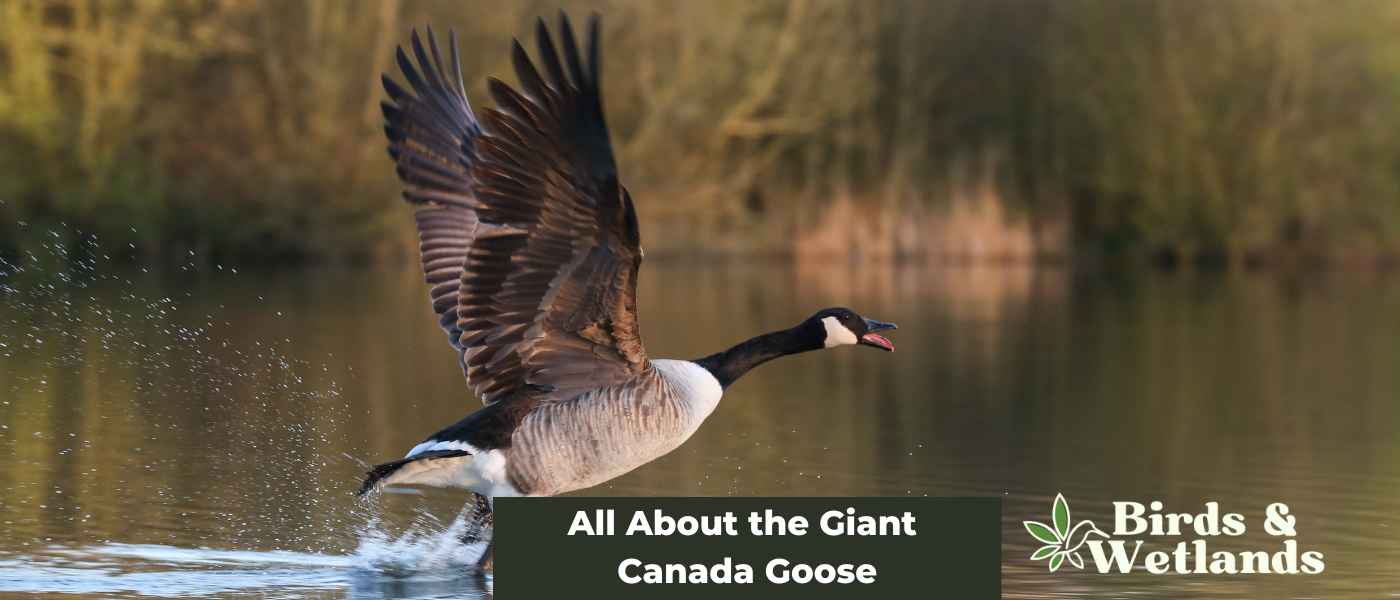There’s a good chance you’ve seen a giant Canada Goose flying around, waddling on the ground, or swimming in the water. These birds are pretty common in North America, but there’s more to them than meets the eye!
In this post, we’ll provide everything you need to know about these impressive geese, from their size and diet to their mating habits and conservation status.
Description
The giant Canada goose (Branta canadensis maxima) is the largest subspecies of the Canada goose, averaging 11 pounds in weight. It is found in the central regions of North America and was once believed to be extinct but was later rediscovered. The giant Canada goose is closely related to other Canada geese, the cackling goose and the Hawaiian goose.
With their tall stature and sturdy bodies, giant Canada geese are formidable birds that command attention wherever they roam. These geese tend to travel in large flocks, often stopping at lakes or ponds while they migrate north in the spring or south in the fall. When alarmed by most predators or other disturbances, these powerful birds are known to put on an impressive display, honking loudly and beating their wings on the ground.
Although the general population of the Canada goose is stable and increasing, this particular type of goose faces several challenges today. Habitat destruction and loss along its migration routes have limited access to food and suitable nesting grounds for many years. There are many concerns about the population may continue to decline if this trend continues. Nevertheless, efforts are being made to preserve giant Canada geese and protect their habitat for future generations.
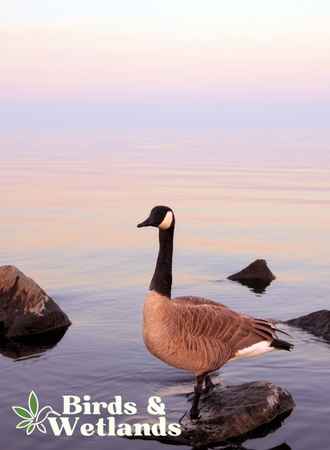
Appearance
The giant Canada goose is easily identifiable by its large size and distinctive markings. As the largest subspecies of Canada goose, these birds have a low call and a larger bill-to-body ratio than other geese.
Additionally, the black on the neck of giant geese starts significantly higher on the body than other variants.
The white cheek patch on the giant Canada goose extends down to the lower bill, whereas it is typically much smaller or doesn’t occur at all in other goose species.
Another prominent feature of giant Canada geese is their pale underbelly, which sets them apart from many other subspecies with whiter head and eyebrow features that are relatively unreliable identifiers.
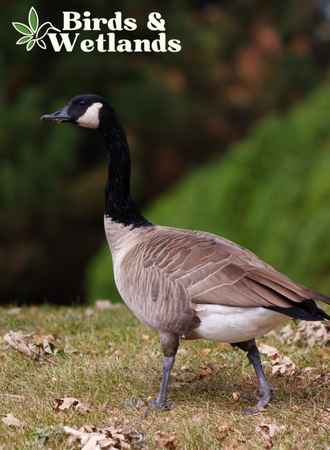
Habitat & Range
The giant Canada geese have a sweeping breeding and nesting range throughout North America. These gregarious birds typically nest in colonies in open spaces such as fields, marshes, and meadows.
The geographic distribution and breeding range of giant Canada geese extends from southern Canada across the Upper Midwest down into the Great Lakes region and southward through the Mississippi River Valley to Tennessee.
Within this expansive range, giant Canada geese are known to build their nests in the summer on small islands with dense vegetation or along river banks that provide some protection for their young and eggs from potential predation.
The giant Canada geese are highly adaptable and can take advantage of deep interior waterways and coastal regions spanning hundreds or even thousands of miles.
In fact, many smaller populations of giant Canada geese are scattered across North America, including Alaska and westward into British Columbia and south along the west coast to northern California and Washington state.
Giant Canada geese are truly impressive members of the bird family Anatidae thrive in a variety of natural habitats with abundant food sources and a decreased risk of exposure from predation when nesting within more enclosed areas like marshlands or forests.
Over the years, these waterfowl have learned to adapt to living alongside humans. Adults breed and nest in many urban areas, so it is not uncommon to see a flock of these waterfowl in parks, golf courses and large ponds.
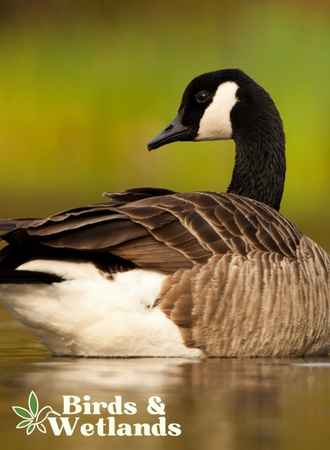
Migration
While giant Canada geese are known for their large body size, what is less well-known is that they do not migrate like other subspecies of Canada geese. Instead, they generally stay in their native habitat throughout the year, surviving cold winters by moving to warmer areas when weather conditions become extreme. This behavior is believed to result from their natural distribution in temperate climates rather than a loss of migratory instincts. Since these birds are non-migratory, it gave rise to the common misconception that they have domestic origins.
Giant Canada geese are found in all U.S. states. Their numbers steadily increase due to a combination of favorable habitat conditions and abundant food sources.
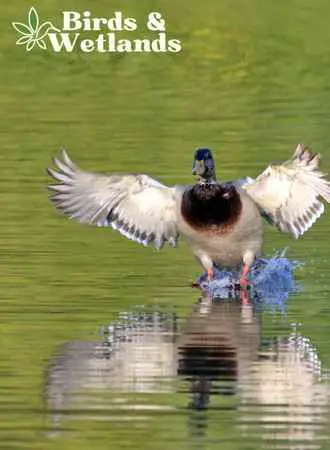
Diet
The diet of the giant Canada goose consists mainly of plant material. This includes seeds, stems, roots, leaves, grass and even crops from nearby farms. Additionally, these large geese will occasionally swim in open water or pond to search for small insects and other invertebrates and fish and mollusks found in local waterways. A healthy diet like this helps to support their rapid growth and allows for their impressive range.
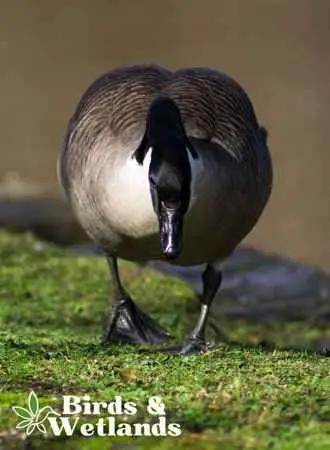
Population & Conservation
According to David Graber and John Coluccy of Ducks Unlimited:
In the early 20th century, a combination of unregulated hunting, egg collecting, and habitat loss led to a massive decline in giant Canada geese. Without any protections in place, these majestic birds were quickly overhunted, leading to their near-extinction across much of their range. By some estimates, they were considered extinct for nearly three decades until Harold C. Hanson of the Illinois Natural History Survey discovered a small remnant population near Rochester, MN, in the early 1960s.
After experiencing a severe population decline in the early 1900s, the giant Canada goose gradually bounced back from near-extinction thanks to various factors.
Initially, conservationists identified multiple populations of the giant Canada goose still thriving despite the larger population bottleneck. Other isolated populations were subsequently identified, including captive flocks maintained by dedicated aviculturists, which became crucial for restoration efforts led by different agencies. Over time, these conservation agencies successfully reintroduced individuals from these remaining populations into wild areas across North America, helping to repopulate and revitalize their natural habitats.
Thanks to these concerted efforts, the giant Canada goose has made an impressive recovery and is now thriving in its native environment again.
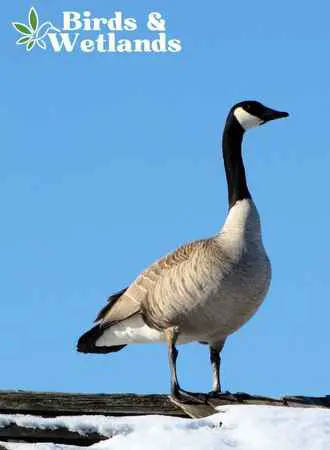
Key Points
The giant Canada goose prefers to nest in temperate regions where the breeding season is longer and the weather is favorable.
These wild birds are omnivores, although they primarily feed on plant material.
Like other species of Canada geese, the giant Canada goose is closely related to some cackling geese.
Many giant Canada geese are non-migratory, meaning they don’t fly south or migrate in the winter.

Jim Addison is an avid bird watcher and has been obsessed with the activity since he was a young boy.
He has traveled all over North America in search of new and interesting species to observe, and his detailed knowledge of the subject makes him a sought-after expert on the topic.

